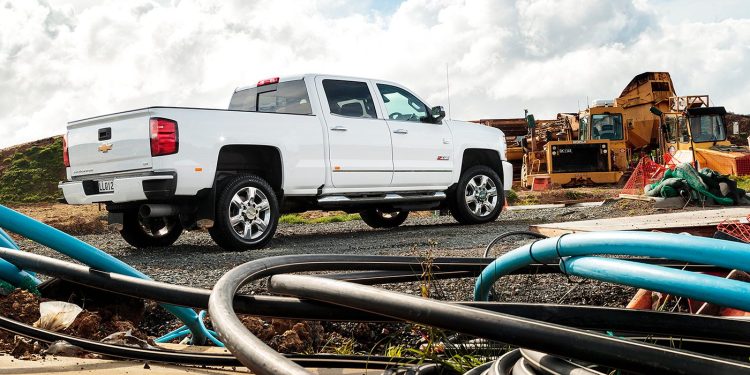2018 Chevrolet Silverado 2500 Custom Sport review
Words Kyle Cassidy | Photos Tom Gasnier
HSV has revived its fortunes with a re-manufacturing business churning out the big Chevrolet Silverado 2500, shifting the steering wheel to the right side. We climb aboard.
HSVs with a big V8 in ’em aren’t anything new, but we’ve not seen anything on this mammoth scale before. HSV (well, parent company Walkinshaw Performance) has ramped up its ‘re-manufacturing’ arm to offer the Chevrolet Silverado 2500 for local consumption, and it’s one of three vehicle lines operating at its new facility in Melbourne. There it also converts (though they prefer the term re-manufacture) Camaro (due along soon) and continues on with the Ram 2500.
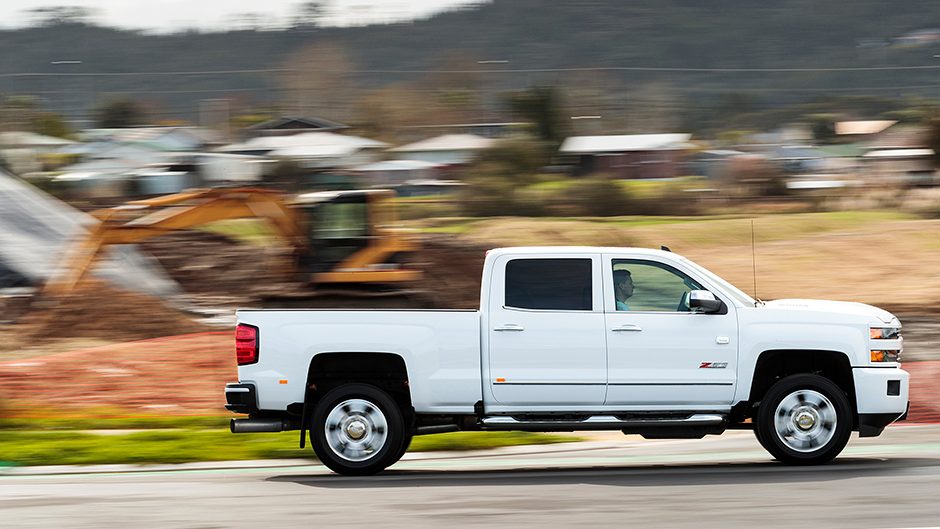
The re-manufacturing process is quite a procedure. The Silverados arrive fully built-up from the Flint assembly plant in Michigan, and the process starts with the separation of the chassis and cab before the contents of the latter are completely removed. Once stripped, they get to fabricating the sheetmetal, transferring the driver’s footrest to the right side, while patching up holes in the firewall and cutting new ones. The front of the chassis is modified to accommodate a new steering box while the dashboard, HVAC unit and seats are modified or reconstructed to suit the switch.
Once the cab and chassis are remarried, HSV does a final quality check. In total it’s said to take about 100 man-hours, five days and some 700 parts. They even reprint the handbook to show a RHD dash diagram, and the VIN is recoded to record each truck as being RHD in the master GM database.
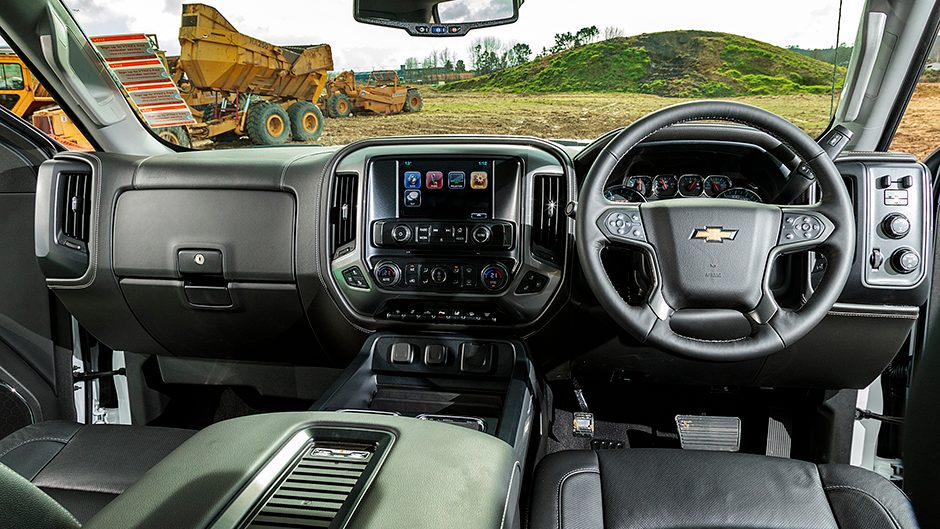
We’ve looked at a few of these XXL pick-ups over the years which have been converted here by private enterprises. While these guys do a good job, it’s hard to compete with the scale of the operation at HSV’s Walkinshaw HQ, one which was kicked off with a $5million grant from the Victorian government to get its first conversion program for the Ram up and running. You really can’t tell this truck started off life with the wheel on the wrong side of the cab. It’s well put together this, though some of the plastics don’t look or feel worthy of the six-figure ask, but it’s a GM thing, nothing to do with the conversion.
Big trucks have large price tags and the Silverado range kicks off with the $134,990 WT for Work Truck which, as the name suggests, is a pick-up specified for toil. No one here has bought a WT, some going for the higher-specified $154,990 LTZ, while most have chosen one of the two special edition models, which add to the LTZ offering with stylised exteriors. There is the all black Midnight Edition, and the Custom Sport as featured, both going for $163,990. The 3500 model is yet to come with its dual rear wheels for added payload and a tag of $169,990.
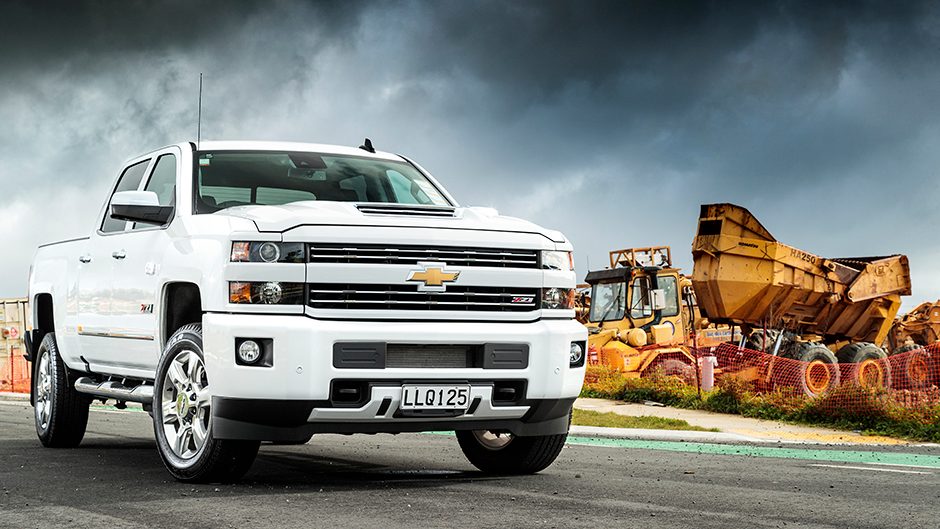
The Custom Sport gets the Z71 off-road option and is all white with a touch of chrome, including the 20-inch alloys in place of the 18s on the LTZ and Midnight Edition. It also gets the spray-on bedliner as standard. These things are the simply ginormous, the cabin space expansive. It’s the only vehicle where three full size car seats fit comfortably in the back. The Isofix latches have been rendered unusable by HSV, no doubt something to do with the Australian Design Rule legislation that the truck has to comply with, which also requires HSV to replace the factory seat belts. There are a few niceties on board like the heated wheel and seats, and the leather-clad chairs with ventilators. The infotainment system lacks in-built nav but it features GM’s Mylink for easy smartphone connection, and there’s a wireless charge pad too.
Along with parking sensors, the rear view camera features the dynamic backing guide-lines to give you a better idea of where you’ll end up when reversing this behemoth. With 3.6 turns between the locks and 15.7m required for a turn-around, you often need two or three cuts at getting it where you want it. The standard mirrors are barely adequate for backing duties; we’d want for the larger towing mirrors which give a better rearward view and also reduce the sizeable blindspot.
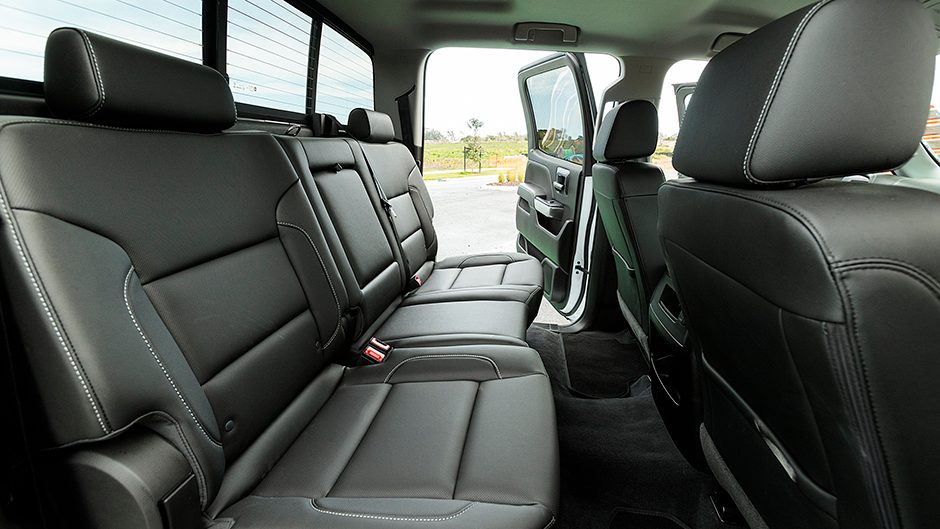
They tell us, however, that these mirrors make the truck too wide for it to be complied under the ADR regime. The side steps are genuinely useful on a 2500 but they’d be better still if they extended past the cab to the rear wheel arch, helping to load the tray. There is a retractable step on the options list, along with a few tonneau cover choices, including one-piece hard lids. Steps in the corner of the rear bumper help loading and the big tailgate is spring loaded, making it much easier to lower and lift.
The 2500 looks out of place in the city- it’s a bit like owning a great dane if you live in a studio apartment. We did manage to squeeze into a car park at Auckland’s St Lukes mall, much to the amazement of the driver in the CX-5 next to us who looked to mouth the words “what a truck”, or something similar. However, there was a good metre and half of the 2500 still sticking out of the park. It’s alright in traffic, but it’d be better suited to life in the regions.
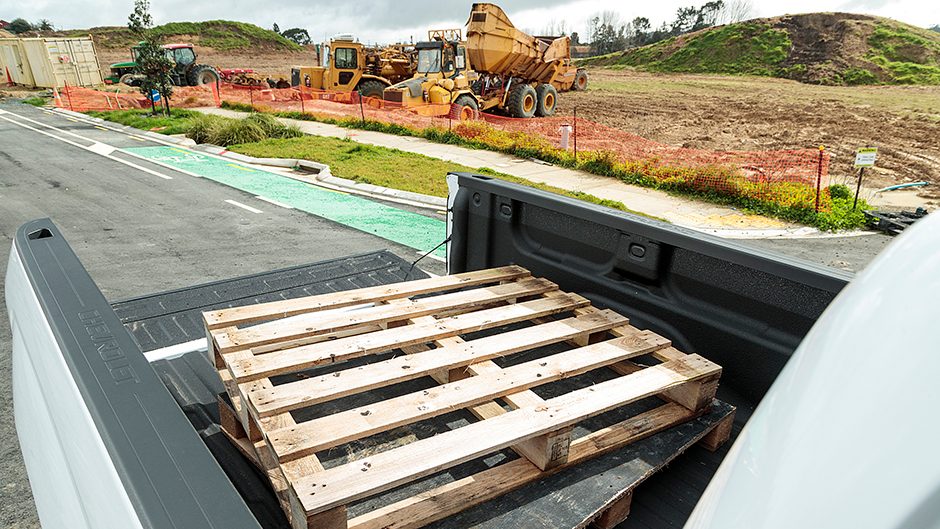
You buy such a truck for its capabilities, but when referencing the 2500, that’s not payload, the WT rated at 975kg, with the LTZ being 100kg less. It’s the 3500 you need for load lugging, whereas towing is what the 2500 series is good for. However, the official sign off on the New Zealand tow rating is yet to be finalised by the NZTA. GM’s bar that is rated to haul 5500kg in the US, the land of litigation, needs to be approved for use here.
For reference, the Aussie tow rating is 5890kg with a pintle hook, 4500kg with a 70mm ball and 3500kg with a 50mm ball. If hauling such massive loads, you’ll need the right licence remember. Helping out is the 2500’s tow/haul mode for the six-speed auto, an exhaust brake function, and you can fiddle with the sensitivity of the trailer brakes from the cab. There’s switchable 4×4 too, including a low range.
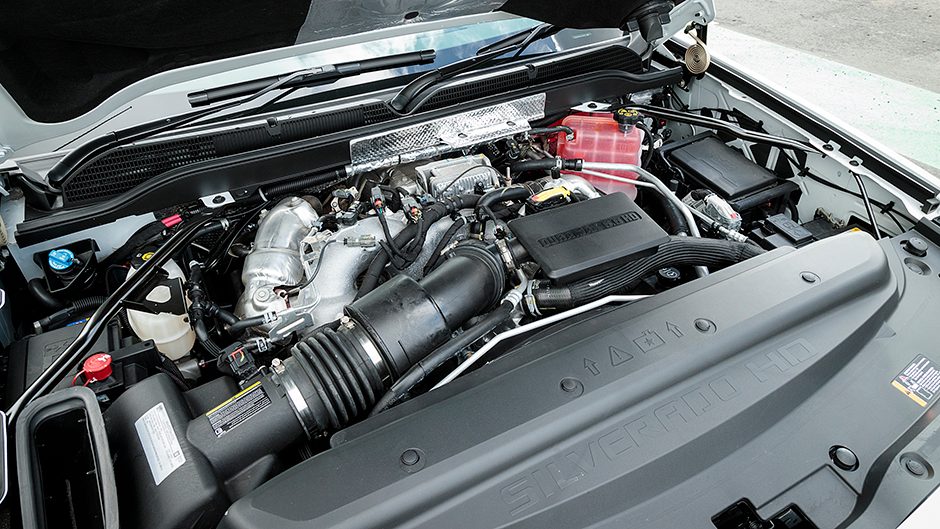
On-road, the 2500 gets along just fine; with it’s width, wheelbase and amount of tread on the road, it’s stable, but it’s hardly nimble if not completely unwieldy. The ride feels like this truck could always do with a good half tonne in the tray to settle the rear, otherwise it does bump about a fair a bit. With 332kW, this has no trouble gathering a head of steam. The V8 oozes torque from idle to about 2500, where the power takes over, and revs to about 3300rpm. But it’s the torque that moves this mountain and the auto handles the task of managing such big outputs smoothly enough, the odd driveline shunt aside. On dry tarmac this beast is generally behaved, but on wet roads 1234Nm flowing freely through the rears always needs careful application.
The 2500 can hit 100 in 7.3sec, making it quicker than the Amarok V6, despite its aeros and overall mass rivalling a block of flats. It takes a big effort to haul it up though, and with a stopping distance of 47m from 100km/h, best watch those following distances when loaded and towing. As you’d expect from a recirculating ball set-up the steering isn’t overly responsive but there is a mite more feel here than with some of the other converted trucks we have driven which might have something to do with the re-engineered steering box internals from HSV.
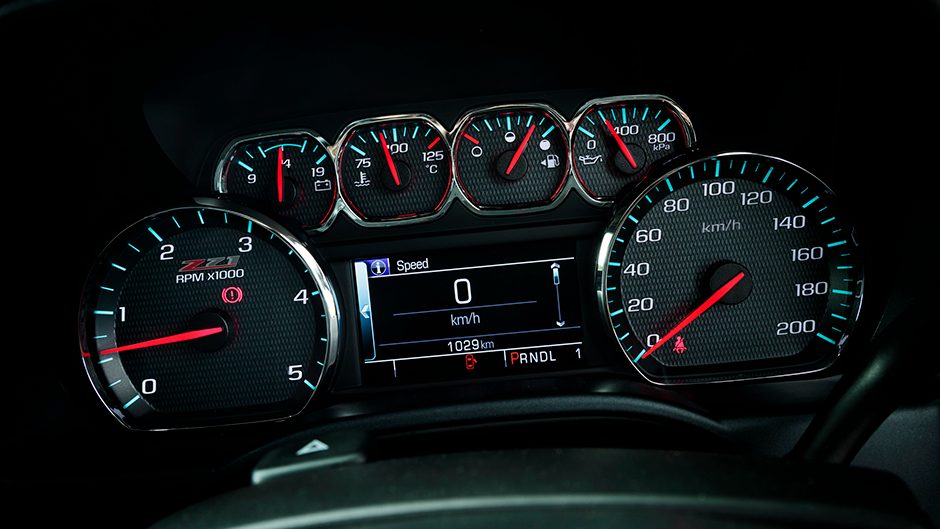
As to economy, we saw 16.5L/100km, though we did quite a few motorway miles on test while the longer term average was sitting at 19.5. And you can expect those figures to soar when hauling big loads. But with a 136 litre tank it goes the distance between fuel ups.
The 2500 won’t be a big volume seller though HSV NZ says two-thirds of its first year allocation has been sold. But it’s the first in a line of Chevrolet products we’ll see here soon, including the aforementioned Camaro, and likely as not the 1500 series of pick-ups as well. And with smaller dimensions and price tags, it’ll likely be a more popular truck here.
| Model | Chevrolet Silverado 2500 Custom Sport |
| Price | $163,900 |
| Engine | 6599cc, V8, TDI, 332kW/1234Nm |
| Drivetrain | 6-speed auto, switchable 4×4 |
| 0-100km/h | 7.3sec |
| Weight | 3616kg |


